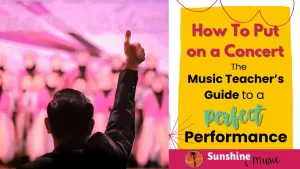Hello readers! Welcome to the next installment of the Getting Started in Gordon Series. Perhaps you read that last sentence and thought, “Nah! I don’t need Gordon stuff. I already have my own method (Orff, Kodaly, Dalcroze …) so I’m good, bye!” Ah! Don’t leave! My main message point with this entire series is that you CAN and SHOULD use them with other pedagogies. Music Learning Theory (the pedagogy created by Dr. Gordon) has so many useful things that you can add to what you already know.
If you are just joining the series, I recommend Getting Started with Gordon and Levels of Understanding as a good starting point. And now, let’s dive into today’s topic: Same and Different. Such a simple concept, but so powerful.
One thing that I notice a lot more in Music Learning Theory Classrooms vs other music classes is the wide variety of tonalities (modes) and meters. Why is that? MLT works off the idea that students learn to define things not only by what they are, but also by what they ARE NOT. Let me give you a non-musical example. Imagine you are a Martian, and you come down to Earth. You’ve never seen a dog before, and the first dog you see is a Dalmatian. Perhaps you might think that dogs are animals with spots and flappy ears. As you travel, you begin to see a larger sample of dogs and not dogs. You learn that dogs can have many shapes and sizes. Not all have spots. You learn that there are animals with spots that are NOT dogs, like cheetahs and spotted eagle rays. But, if you never saw anything that wasn’t a dog, you wouldn’t have as rich of an understanding of what dogs are.
Now let’s turn this idea in a musical direction. MLT suggests that you use a wide variety of tonalities (dorian, phrygian, etc) and meters (duple, triple, mixed). This way, student begin to learn what the major scale is, because they also know what it is NOT. Same with minor. Do you have to teach kids the theory behind all the modes? NO! It can be as simple as singing a song in a different mode for them, and use it as a rhythm focused lesson. They just need exposure to those others sounds. You could even just have them enter and sit to modal or mixed meter music. Anything you can manage is awesome!
We can focus this idea in on more specific musical skills too. Many times with my kindergarteners, when we are learning about beat, we will will tap, clap and play rhythm sticks to the beat to a variety of songs, but we will also practice “not the beat.” Where we play really fast, or sporadically. Or when we are learning to read SO-MI patterns, I might sing one and have them tell me if it matches what is on the board or if it is different.
As you are starting to think about your lessons for the coming year, I encourage you find places where you think same and different might be a useful tool for comprehension. I have found it to be EXCELLENT!
Happy teaching!






